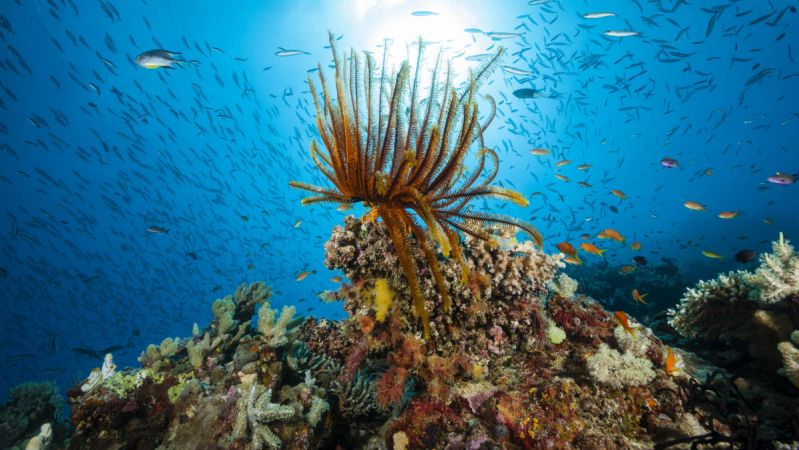
Melting ice caps, ozone layer holes over South America, and mass bleaching of the Great Barrier Reef. By many indications, our environment is in bad shape. In response to many of these issues, it seems humankind is shrugging its collective shoulder. But scientists are fast at work to turn back the clock. Their solution to save Australia’s greatest natural wonder is arguably among the cleverest, most ambitious of any such human endeavor in history.
There’s no way to sugarcoat it: the Great Barrier Reef is dying. The reef has always had to endure Earth’s ever-changing climate. But, in recorded history, it’s never been forced to cope with this much change in such a short period. What’s more, as recently as January of this year, scientists determined that the window to save the reef is rapidly closing.
Pioneering research and development at the University of Melbourne and the Australian Institute of Marine Science concluded that a massive “sun shield” could help cut coral bleaching caused by sun exposure by up to 30 percent. The Great Barrier Reef Foundation reports the shield works by floating on the surface of the water, just above the coral, acting as a physical barrier between the sun and the reef. It’s a staggering 50,000 times thinner than a human hair. Constructed from calcium carbonate, the same material coral uses to strengthen their skeletons, it’s also 100-percent biodegradable.
So far, only small-scale trials have been conducted. Scientists tested one molecule-thick shielding film and found it to reduce bleaching in seven different species successfully. It’s clear this isn’t a silver bullet solution, however. Constructing a shield large enough to protect the reef’s 134,000 square miles (348,000 square kilometers) clearly isn’t feasible. It would need to blanket an area the size of the United Kingdom, the Netherlands, and Switzerland combined. But this targeted solution has the potential to save thousands of square miles of high-risk or “high-value” areas. And, frankly, we have to start somewhere.
The project is in its infancy, but it already includes heavy-hitting backers from a finance and research perspective. The group behind the scenes includes coral experts, marine ecologists, polymer scientists, and chemical engineers. Plus, it’s headed by the same scientist who helped design Australia’s polymer banknotes. At a time when we’re racing against the clock to save what remains of the reef, it feels like a step in the right direction.
Aside from the do-good environmental aspect of caring about the reef’s future, Australia has a vested financial interest in saving it. It’s the largest single contributor to the country’s economy, worth an estimated AUD $56 billion (USD $43 billion) and more than 60,000 jobs. In this case, we can be thankful that money is such a great motivator.



